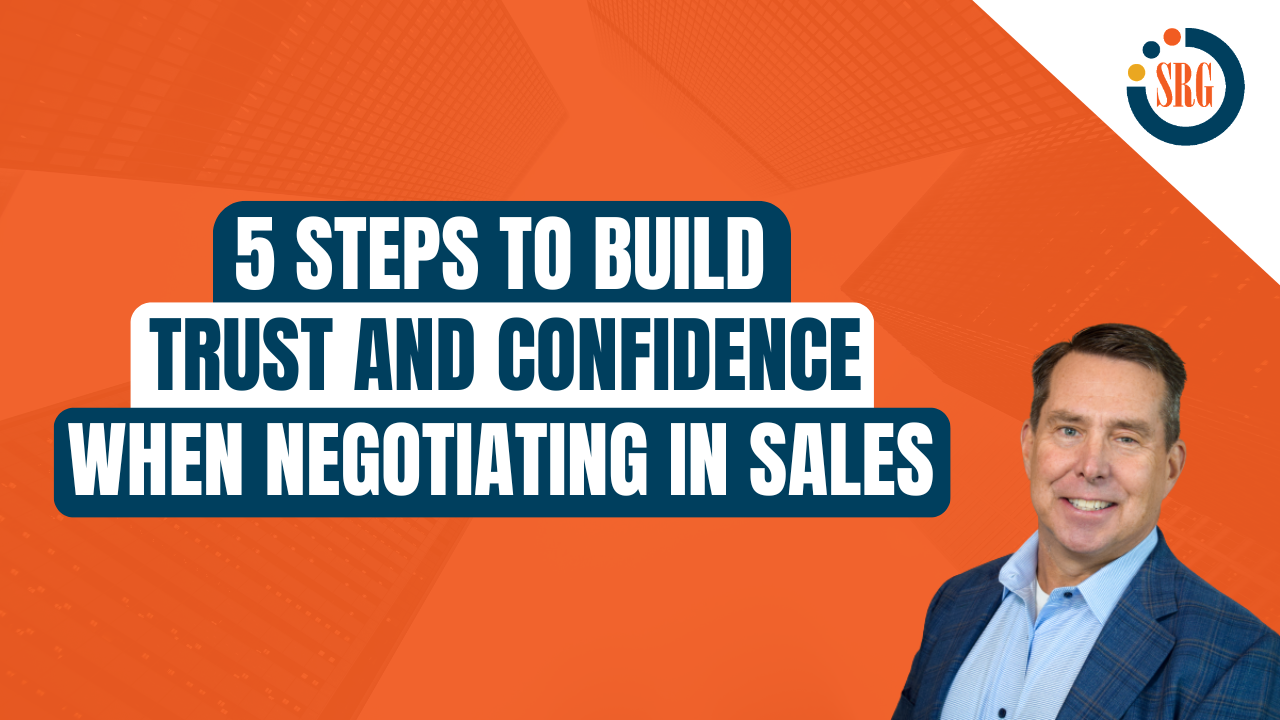You’ve worked hard to get the deal to this point and then other decision-makers appear, procurement gets involved and your deal is stalled out while your terms are scrutinized, and the pricing gets squeezed. If you dread the final negotiation, you’re not alone. One minute you’re about to close a large sales opportunity and the next, you’re facing a series of roadblocks.
The problem is that most sales professionals don’t plan for the negotiation the way they’ve approached the rest of the deal. They spent a lot of time following a process to identify the client’s needs and prepare their solution, but then leave the final negotiations up to chance.
Heated negotiations can damage your relationship and decrease trust with your client, and if handled poorly, they can undermine your confidence as a sales professional.
The best negotiators are the ones who anticipate this phase and prepare for it appropriately. Here are the five steps many top negotiators follow to improve and build trust and confidence in a negotiation:
1. Start with the Shared Interest
Remind yourself that the client is talking to you for a reason, and likely wants to implement your solution (or you probably wouldn’t still be talking). Identify why this solution will be good for their business, and why you have a shared interest in helping them be successful. Think in terms of the organization’s mission and how your solution will help them achieve that vision. Remind them why this is a great solution to their problem.
2. Communicate the Issues Already Agreed to
As you enter final sales negotiations, you most likely agreed to many items. You can build trust by coming to the negotiation with a list of all the items you’ve agreed to and pointing out that most of the work has been done. This is also valuable because you can remind them later about these items if they start to pressure you on price or other terms – you can suggest that if the deal is changing, you may need to go back and revisit those items already agreed to.
3. Identify the Interests Behind the Remaining Positions
Next, ask your client to identify all the negotiation issues left to discuss, and work to understand the interest behind their position. Why are these items so important? Are there other ways to address their needs (without lowering the price)? Resist trying to negotiate sales one item at a time without knowing the bigger picture, or you will likely end up with additional items to resolve before you get the deal done. “Nibbling” is a common tactic a buyer will use to attempt to sweeten the deal for their company in the final stages of the game.
4. Look for Creative Win/Win Options
Sales negotiations often get contentious when it appears one side must give in (lose) to close the deal. Approach the negotiation as a collaborative discussion where the goal is to get a deal done and both sides feel really good about the outcome. No one wants to enter a relationship where they feel like they got taken advantage of or can’t trust the other party. Win/Win negotiations look for a way to expand the opportunity or provide additional value so that both parties improve their position.
5. Don't Make it Personal
It’s easy to get frustrated and defensive when engaged in a heated negotiation. Remember not to take it personally on your side, or make it personal for them, and never attack the individual. It’s helpful to take the mindset that both parties are attempting to do what’s right for their organization as part of doing their job. Often the person (or persons) on the other side of the negotiation is hampered by policy and guidelines for the terms they can accept and may not even agree with their organization’s position. Try to protect the relationship and remain professional regardless of how challenging the negotiation gets. There may be other deals and long-term partnerships to consider in the future.
Negotiations can be difficult and frustrating to navigate at the end of a long sales cycle, especially when you do not build trust in its foundation. To get the deal done; remain professional, be considerate of the other person’s point of view, and work to build a positive outcome for both parties. In addition to closing the deal, you may even build a stronger relationship for the future.

